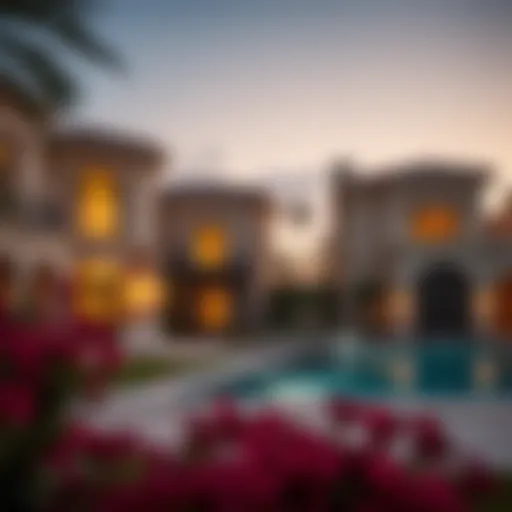Architectural Marvels of the UAE: Abu Dhabi and Dubai Towers
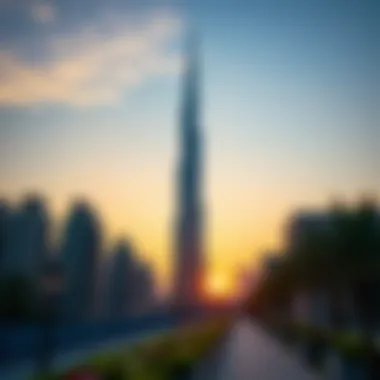
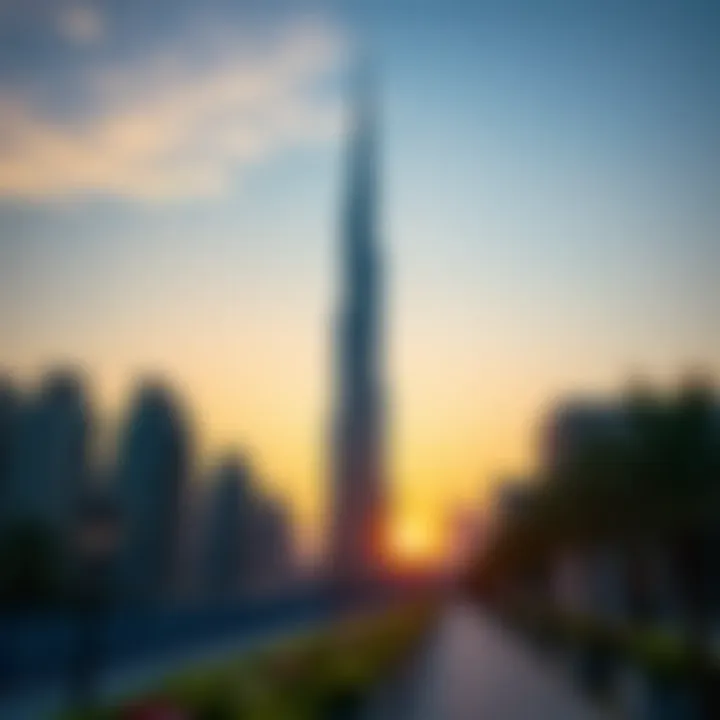
Intro
The United Arab Emirates stands as a beacon of modern architecture and urban evolution, particularly through its towering landmarks in Abu Dhabi and Dubai. As these cities push the boundaries of design and engineering, their skyscrapers encapsulate not only the aspirations of a nation but also its rich tapestry of culture and history.
From the iconic Burj Khalifa that pierces the sky in Dubai to the Sheikh Khalifa Tower gracing Abu Dhabi, each structure tells a story beyond bricks and mortar. The towers symbolize an audacious leap into a future that harmonizes tradition and contemporary aesthetics, making the UAE a focal point on the global stage.
The discussion around these architectural marvels goes beyond aesthetics; it encompasses the economic and cultural catalysts that shape their existence. By examining the convergence of technological advancements, investment trends, and design philosophy, we can glean deeper insights into how these towers influence urban living and real estate dynamics.
In the following sections, we will navigate through these elements, highlighting not just the architectural brilliance, but also the market trends and practical insights that potential investors, homeowners, and tenants need to consider while engaging with the UAE's bustling real estate sector.
Preface to UAE Skyscrapers
The United Arab Emirates has become synonymous with bold architectural feats, prominently featuring skyscrapers that dominate its skylines, particularly in cities like Abu Dhabi and Dubai. This section underscores the pivotal role of these colossal structures in shaping not just the urban landscape, but also the economic fabric of the region. In essence, skyscrapers aren't merely buildings; they are landmarks that represent ambition, innovation, and cultural identity.
Significance of Skyscrapers in Urban Planning
Skyscrapers play an essential role in urban planning, offering several benefits and considerations that can’t be overlooked.
- Space Utilization: In areas where land is at a premium, rising vertically allows cities to maximize the usable space without sprawling outwards. This is pivotal in managing urban density, especially in metropolitan areas.
- Economic Growth: These towering structures often host commercial hubs that generate employment and attract investment. For instance, when the Burj Khalifa was inaugurated, it not only became a symbol of Dubai but also catalyzed extensive development in its vicinity.
- Cultural Identity: The design of skyscrapers often reflects local culture and history. For example, the intricate geometrical patterns found in some buildings echo traditional Islamic architectural principles, linking past and present.
Additionally, skyscrapers often facilitate vertical communities, allowing residents and businesses to converge in a compact environment. As such, their significance transcends mere aesthetics; they embody the urban narrative of the UAE.
Overview of Architectural Styles in the UAE
The architectural styles of the UAE vary dramatically, showcasing a fusion of modernity with traditional elements. Here’s a closer examination of prominent styles:
- Modernism: This is characterized by clean lines and innovative materials. The Burj Khalifa and The Address Downtown epitomize this style, melding luxury with cutting-edge engineering.
- Islamic Architecture: A hallmark of the UAE’s design portfolio, Islamic architecture features intricate patterns, extensive use of domes and arches, and gives priority to functionality and beauty. Structures like the Sheikh Zayed Grand Mosque serve as prime examples, integrating spirituality with artistry.
- Sustainable Design: There’s been a marked shift towards eco-friendly buildings in recent years. Prominent projects like the Aldar Headquarters integrate sustainable practices, such as energy-efficient systems, showcasing a commitment to environmental concerns.
Understanding these styles is crucial for investors and homeowners alike, as they not only influence the aesthetic of a location but also determine property values and desirability. Moreover, such insights can guide developers in creating structures that resonate with cultural identity while embracing modern needs.
Iconic Towers in Dubai
Dubai, a city that seems to rise from the sands like a mirage, is synonymous with its breathtaking skyline. The iconic towers in Dubai are more than just tall buildings; they are symbols of ambition, innovation, and luxury, showcasing the rapid evolution of the city and reflecting its cultural diversity.
These architectural giants serve a multitude of purposes—commercial, residential, and even tourist attractions, making them vital to the urban fabric. Investors and developers alike view these towers as lucrative opportunities, while homeowners and tenants experience firsthand the conveniences and amenities that come with living in such structures. This discussion highlights several of Dubai's most notable skyscrapers, each telling its own story of design vision, cultural influence, and futuristic engineering.
Burj Khalifa: A Landmark of Modern Engineering
The Burj Khalifa stands as the pinnacle of human achievement, not merely for its height but for its sophisticated design and engineering prowess. Stretching to a staggering 828 meters, it holds the title of the tallest structure in the world since its completion in 2010. Designed by Adrian Smith of Skidmore, Owings & Merrill, the building's inspiration is drawn from Islamic architecture, embodying the essence of the region while pushing the boundaries of modern engineering.
The Burj’s tripartite structure resembles a desert flower, with a central core that supports both its impressive height and internal layout. Visitors flock to its observation decks to take in panoramic views of the city, while residents enjoy unparalleled amenities. In terms of real estate, the Burj Khalifa has not only redefined Dubai's skyline but has also shifted its property market, attracting global investors eager to own a piece of this architectural marvel.
Burj Al Arab: Symbol of Luxury
The Burj Al Arab is often hailed as one of the most luxurious hotels in the world. From its sail-like silhouette to its lavish interiors, this building is synonymous with opulence. Completed in 1999, it was designed by Tom Wright and created to be a symbol of Dubai's wealth and growth.
Guests are treated to an experience of extravagance; the hotel boasts an underwater restaurant and a helicopter pad. Its unique architecture and high-end services serve to attract affluent travelers from around the globe. For investors, the Burj Al Arab exemplifies how luxury real estate thrives in Dubai's market, acting as both a tourist magnet and a lucrative investment opportunity for hoteliers.
The Address Downtown: Integration of Hospitality and Residential Life
The Address Downtown stands as a testament to how residential and hospitality zones can merge harmoniously. This dual-purpose building, located near the Burj Khalifa, offers a mix of serviced apartments and a luxury hotel.
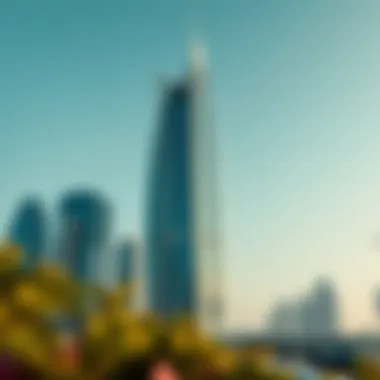
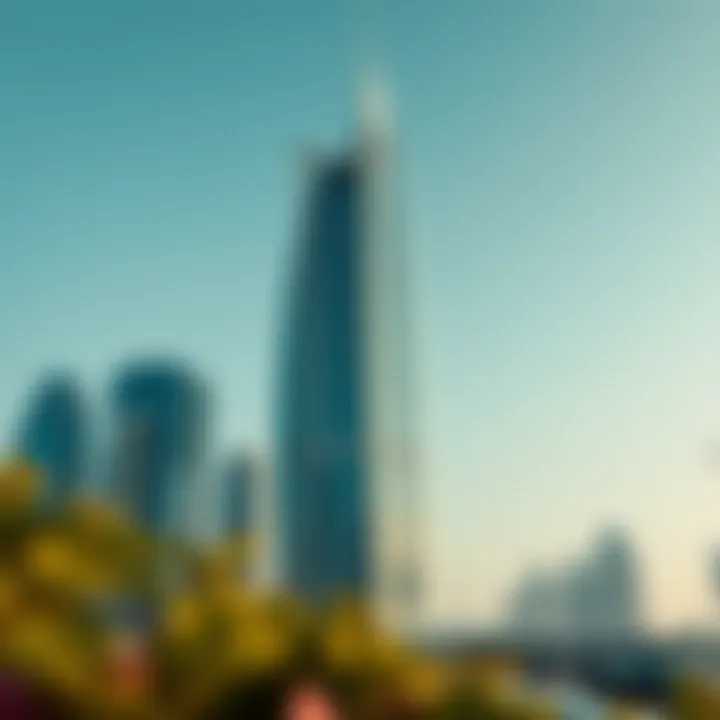
Designed by the renowned firm of Emaar Properties, the Address embodies elegance with its stunning façade and sophisticated interior. It provides residents with top-notch amenities such as infinity pools, wellness centers, and direct access to shopping malls. Investors find this integration particularly appealing, as it creates diverse revenue streams in a thriving urban environment. For tenants, the chance to live in a space that bridges residential comfort and hotel luxury is an enticing proposition.
Dubai Marina Towers: A Hub of Urban Lifestyle
The Dubai Marina Towers represent the pinnacle of urban living, encapsulating the essence of a lively metropolitan lifestyle. Set against one of the world's largest man-made marinas, these towers are a mix of residential and commercial spaces, designed to foster community living.
With picturesque views of the water and surrounding cityscape, the Marina Towers are incredibly sought after among young professionals and families alike. Here, life is punctuated with dining, shopping, and recreational options at your doorstep. For real estate professionals, this development highlights how integrated urban designs can cater to familial and social needs, making it a model for future developments.
"In Dubai, every building tells a story of innovation and ambition, reflecting the spirit of a city continually on the move."
Significant Structures in Abu Dhabi
Abu Dhabi, the capital of the United Arab Emirates, showcases an array of architectural wonders that capture the essence of modernity intertwined with cultural heritage. The significance of the structures in this city extends beyond mere aesthetics; they embody the aspirations and values of a nation that has rapidly transformed itself on the global stage. Each notable building tells a story, reflecting regional identity, artistic expression, and a future-forward vision. Whether it’s boosting tourism, enhancing urban dynamism, or attracting foreign investment, these skyscrapers play a pivotal role in solidifying Abu Dhabi's place as a key player in the architectural landscape.
Etihad Towers: A New Era of Grandeur
The Etihad Towers consist of five interconnected towers, each offering a unique perspective on luxury and modern design.
- Architectural Design: Designed by the renowned architectural firm DBI Design, the towers feature sleek lines and glass facades that echo the curvature of traditional Islamic architecture while embracing contemporary maximalism.
- Functional Benefits: The main tower serves as a mixed-use property with luxury apartments, offices, and a vibrant hotel space. It plays an essential role in attracting high-net-worth individuals and international visitors.
- Cultural Significance: Standing tall against the Abu Dhabi skyline, the towers have become a symbol of ambition and progress, promoting a sense of national pride.
- Public Engagement: The observation deck offers visitors panoramic views of the Arabian Gulf and the city, proving that Etihad Towers not only house businesses but also welcome tourists, strengthening the city’s economic framework.
The Aldar Headquarters Building: A Unique Architectural Statement
With its striking circular design, the Aldar Headquarters Building represents a departure from conventional office structures.
- Innovative Design: This building is the first circular building in the Middle East. The bold geometry challenges architectural norms, making it instantly recognizable.
- Symbol of Modernity: It blends form and function beautifully, and its unique shape is a metaphor for innovation in Abu Dhabi’s business sectors.
- Sustainability Initiatives: The structure incorporates energy-efficient systems, adhering to modern standards of environmental responsibility.
The Louvre Abu Dhabi: Blending Culture and Architecture
The Louvre Abu Dhabi stands as a beacon of cultural diplomacy and artistic collaboration, being the first universal museum in the Arab world.
- Architectural Features: Designed by Jean Nouvel, the iconic dome features a geometric design that allows sunlight to filter down, creating a “rain of light” effect.
- Cultural Importance: It serves as a link between cultures, showcasing global art from ancient to contemporary pieces. Here, architecture transcends function and enters the realm of cultural storytelling.
- Community Engagement: The museum has become a cultural hub, attracting both local and international visitors, encouraging a dialogue about art and heritage.
National Museum of Abu Dhabi: Heritage in Modern Design
The National Museum of Abu Dhabi encapsulates the spirit of the UAE with its focus on history and heritage, designed to engage in a dialogue with contemporary architecture.
- Modern Aesthetics: The design utilizes innovative materials and techniques, combining familiar shapes with modern engineering, allowing for a fresh interpretation of tradition.
- Cultural Dialogue: It provides a platform for educating visitors about the UAE’s rich history, from the ancient past to modern times, thus establishing an emotional connection with its audience.
- Impact on Community: By highlighting historical narratives, the museum acts as a vehicle for national identity and pride, contributing to social cohesion and fostering a sense of belonging.
Abu Dhabi's significant structures do more than just scrape the sky; they encapsulate the heart of a nation striving to define its identity in the 21st century. As these architectural masterpieces continue to evolve, they reassure us that the future holds endless possibility.
Cultural Influences on UAE Architecture
Understanding the cultural influences on architectural design offers a window into the very essence of the UAE. Architecture in this region doesn't merely reflect functionality; it tells a story, intertwining history, religion, and innovation to characterize the landscape. The towers and buildings are more than mere structures; they are icons of identity that resonate deeply with the cultural fabric of society.
These influences primarily stem from Islamic heritage, local traditions, and a medley of global architectural trends. It’s almost as if each building tries to speak the dialect of its environment—where gracious curves and sharp angles merge into enticing forms. This section unravels how these elements play a vital role in shaping not only buildings but also the lifestyle and spirit of the people living in these dynamic urban areas.
"Architecture can enhance the sense of belonging, connecting spaces to their cultural and historical roots."
Islamic Architectural Traditions
Islamic architecture imbues UAE's skyline with a uniqueness that is palpable. Rooted in centuries of cultural development, these traditions cherish geometric patterns, intricate tile work, and expansive courtyards, creating spaces that are visually stunning yet harmonious. Ali Ibn al-Haytham, who lived in the 10th century, mentioned geometry's role in the Islamic cultural paradigm. One can see this influence prominently reflected in structures like the Sheikh Zayed Grand Mosque in Abu Dhabi.
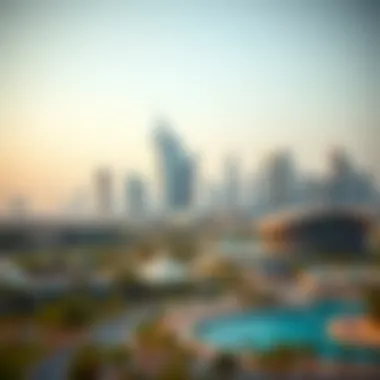
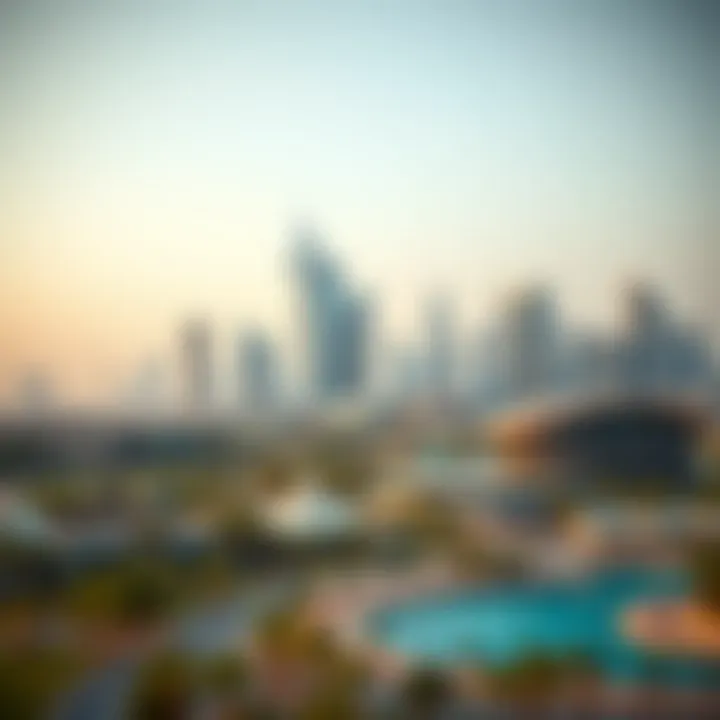
- Key Features:
- Geometric Patterns: Visual motifs are often incredibly intricate, symbolizing the infinite nature of Allah.
- Lush Courtyards: These spaces not only provide relief from the heat but act as communal areas for social interaction.
- Minarets and Domes: Structures often designed to dominate the skyline reflect faith and function within the urban setting.
Architectural choices inspired by Islamic traditions serve to reinforce community bonds, inviting anyone who steps inside these edifices to connect with both the spiritual and cultural landscapes.
Integration of Sustainability into Modern Designs
In the fast-paced world of architecture, sustainability is becoming crucial, particularly in a place like the UAE, where environmental extremes pose significant challenges. This shift isn't just a trend but part of a broader philosophy that integrates the past with future expectations. Building designs increasingly prioritize sustainability by incorporating eco-friendly materials and energy-efficient technologies, all the while maintaining the rich aesthetic rooted in the region's cultural identity.
- Innovative Solutions:
- Solar Panels: Roofs equipped with solar technology alleviate dependence on non-renewable resources.
- Green Spaces: Incorporating gardens and parks not only beautifies but also promotes biodiversity and community health.
- Water Management Systems: Advanced systems that recycle water contribute to sustainable practices necessary in a desert region.
As future skyscrapers and facilities rise, the continued commitment to sustainable practices signals a society that respects its past while bravely facing modern challenges. Therefore, cultural influences on architecture in the UAE provide a profound sense of place, embracing tradition while looking toward the horizon.
For further reading on the impacts of cultural influences in architecture: Wikipedia on Islamic Architecture and Britannica's take on Modern Architecture.
As construction processes evolve, understanding these cultural undercurrents can help investors, homeowners, developers, and others navigate the ever-changing urban landscape crafted within this remarkable region.
Technological Innovations in Skyscraper Construction
The construction of skyscrapers in the UAE showcases an impressive blend of creativity and technology. As cities like Abu Dhabi and Dubai strive to define their skylines, advances in building technologies have played a crucial role in elevating these architectural masterpieces. The significance of understanding these innovations isn’t merely academic; for investors and developers, it’s about harnessing the latest tools to maximize efficiency, sustainability, and visual impact. As we delve into material advancements and the advent of smart buildings, it becomes clear that technology isn't just a tool; it’s a catalyst for change in urban habitats.
Material Advances: From Concrete to Carbon Fiber
Materials used in skyscraper construction have undergone radical transformations. Traditional concrete has a stalwart reputation, but its weight can severely limit the height and design flexibility of buildings. The introduction of carbon fiber composites represents a seismic shift. These materials are not only lighter but also possess remarkable strength, allowing for taller structures without the immense foundational support that conventional materials require.
- Lighter Weight: Carbon fiber can reduce the overall load of a building, enabling architects to focus on innovative designs rather than just structural integrity.
- Enhanced Durability: It resists corrosion and can withstand extreme weather conditions, which is paramount in a region that faces its fair share of heat and sandstorms.
- Sustainability: Furthermore, this material is often produced using environmentally friendly processes, which aligns with the UAE's vision for sustainable development.
In practical terms, buildings employing carbon fiber can soar higher and incorporate more aesthetically pleasing designs. The fusion of beauty and engineering prowess creates structures that do not simply rise above the cityscape but redefine it entirely.
Smart Buildings: The Role of Technology in Modern Architecture
The integration of technology into the architectural fabric of skyscrapers forms the backbone of their functionality today. Smart buildings leverage advanced building management systems (BMS) to optimize energy usage, enhance safety, and provide a more responsive environment for occupants. These innovations are particularly attractive to homeowners and tenants keen on sustainability and efficiency.
Consider the following features that smart buildings utilize:
- IoT (Internet of Things) Devices: Sensors that monitor energy consumption, occupancy, and overall infrastructure health, allowing for real-time adjustments and maintenance scheduling.
- Automated Systems: Smart lighting and HVAC (heating, ventilation, and air conditioning) systems adapt based on usage patterns, providing comfort while significantly reducing energy costs.
- Data Analytics: By collecting and analyzing data, building managers can predict maintenance needs before they become apparent, ensuring operational continuity and safety.
Impressively, these features lead to not only cost savings but also enhance the quality of life for residents. As more individuals gravitate toward these modern living spaces, investors recognizing the long-term value of technology-integrated properties will undoubtedly find themselves on the cutting edge of the real estate market.
"The future of skyscraper construction lies not just in reaching new heights, but smartly integrating technology that harmonizes with our lives, ensuring durability, sustainability, and comfort for generations to come."
In summary, technological innovations, from groundbreaking materials to intelligent systems, are transforming the landscape of skyscraper construction. As this sector continues to evolve, staying abreast of these advancements will be vital for anyone invested in the future of urban development.
The Impact of Skyscrapers on Dubai's Real Estate Market
Skyscrapers have acted as pillars of the Dubai real estate market, shaping not only the skyline but also economic trends and property values within the city. These towering structures attract more than just admiration; they draw in both investors and residents from around the globe. Understanding the implications of these immense buildings provides clarity into the evolving landscape of real estate in the UAE.
Attracting Global Investors
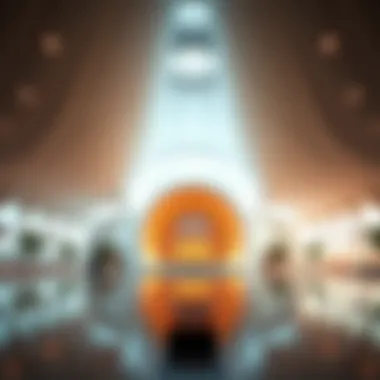
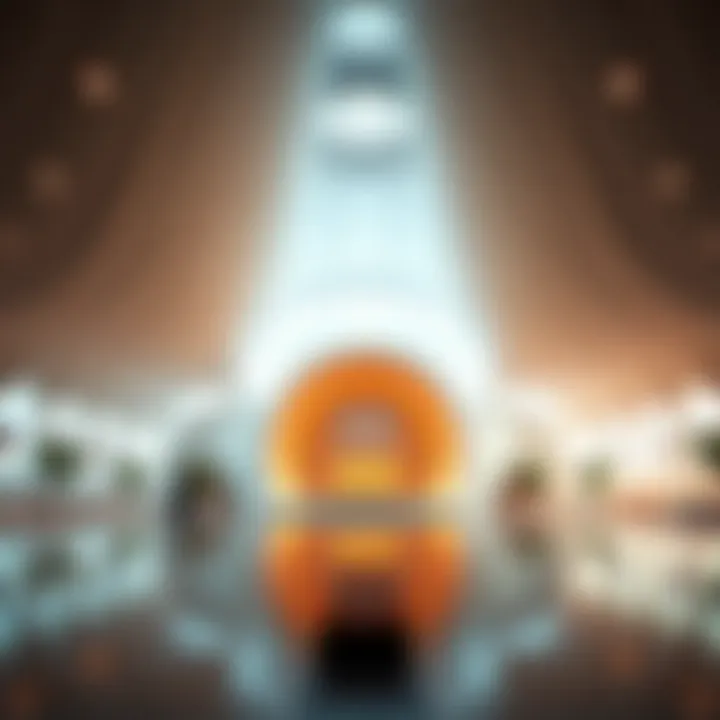
When it comes to attracting international buyers, Dubai's skyscrapers play a leading role. The unobstructed ocean views and proximity to luxury amenities make these high-rises some of the most sought-after properties. A diverse collection of towers—like the iconic Burj Khalifa and the opulent Burj Al Arab—offers high-end apartments and commercial spaces that often entice affluent clients from various countries.
Moreover, the unique architectural designs not only showcase modern engineering but also embody cultural elements that resonate well with foreign investors. It's not just buildings; it's about buying a taste of Dubai's cosmopolitan life. The high returns on investment further reinforce this influx. Property value appreciation in desirable locations has paved the way for lucrative investment opportunities, meaning investors are keen to snap up units in these skyscrapers.
Changing Urban Dynamics and Property Values
Skyscrapers are a catalyst for dynamic shifts in urban development. They contribute significantly to the transformation of the Dubai skyline, acting as anchors for new communities. As high-rise towers are erected, surrounding areas often see rapid development, including retail outlets, restaurants, and entertainment options. These changes inherently increase property value in the vicinity.
The shift has moved real estate from traditional low-rise neighbourhoods to vertical living, shaping not just how the city looks but how people live. Companies often prefer having their office spaces located in these towers, further influencing property demand.
"In Dubai, high-rises don’t just symbolize luxury; they redefine land use and set benchmarks for property valuations.”
The correlation between high-rise developments and rising property values is clear. Areas surrounding iconic towers can experience significant appreciation rates, compelling more buyers to invest in these locales.
In summary, skyscrapers in Dubai are not merely structures; they are instrumental in driving international interest and redefining urban landscapes. The appeal of towering heights and modern amenities creates a unique real estate market that continues to adapt and evolve in response to both local and global trends.
Future Trends in UAE Skyscraper Developments
The skyline of the United Arab Emirates is a living testament to architectural ambition. As we peer into the future, it becomes evident that the evolution of skyscrapers in the UAE will continue to be shaped by innovation, sustainability, and an unwavering dedication to aesthetics. This section aims to explore the emerging trends that are set to redefine the construction and design of high-rise structures across this dynamic region, highlighting their significance in the architectural landscape.
Upcoming Projects and Their Significance
In the realm of skyscraper developments, several upcoming projects are capturing the imagination of investors and urban planners alike. These ventures aim not just to add to the skyline but also to fulfill specific societal needs and reflect cultural identities.
- Dubai Creek Tower: Scheduled to debut as the tallest structure in Dubai, this tower will eclipse even the Burj Khalifa. Designed to be a centerpiece of the Dubai Creek Harbor, its form will resemble a lily, symbolizing beauty and growth—aligning with Dubai's vision of becoming a global hub for tourism and innovation.
- Fujairah Tower: This soon-to-arise structure is aiming to embody the cultural essence of its surroundings. Designed to mimic the jagged collages of the Hajar Mountains, it intends to root itself firmly in local heritage while pushing the envelope of modern engineering.
Incorporating smart technology, green building practices, and space for communal activities, many upcoming projects ensure an alignment with environmental sustainability and the welfare of society. Such efforts will likely boost the economic landscape by attracting global investments while fostering a sense of community among residents.
Shifts in Architectural Practice: A Look Ahead
With the passing of every year, architectural practice in the UAE is undergoing significant shifts that demand fresh perspectives and innovative thinking. No longer just about erecting tall structures, the focus has turned towards creating spaces that reflect functionality and identity.
Architects and developers are exploring a range of modern design principles that emphasize:
- Sustainable Design: Architects are increasingly prioritizing sustainability during the design phase. This includes the use of renewable materials, energy-efficient systems, and designs that harness natural light to minimize reliance on artificial sources.
- Modular Construction: This method allows for quicker assembly without compromising quality, which is particularly valuable in a market that thrives on speed and efficiency. Construction modules can be prefabricated off-site, significantly reducing building time and costs.
- Community-Centric Approaches: There is a noticeable push toward integrating residential areas with commercial spaces to foster a sense of belonging. This shift aims at creating vibrant urban ecosystems where people can live, work, and play all within their neighborhoods.
As architectural practitioners navigate these transformations, they will encounter the growing demand for innovative designs that address both global challenges and local aspirations—an intricate balancing act that will shape the future of the UAE's urban landscape.
The path ahead is dotted with exciting possibilities, but also necessitates a grounded approach to the implications of construction, as rapid growth continues to influence the socio-economic fabric of the UAE. It is within this context that we can anticipate a remarkable chapter in the emirate's architectural journey, where skyscraper developments will not only define the skyline but also the very essence of urban life.
End: The Legacy of UAE Towers
As we draw our exploration to a close, it’s essential to reflect on the profound legacy these towering structures hold within the UAE. The skyscrapers of Abu Dhabi and Dubai are more than just tall buildings; they represent the spirit of ambition and innovation that defines this nation. Their architectural designs, which embrace both modern aesthetics and cultural richness, communicate a narrative of transformation and forward-thinking that resonates far beyond their physical presence.
Enduring Icons of Modern Civilization
The towers in the UAE have achieved iconic status worldwide. Each building stands as a testament to the remarkable abilities of architects and engineers, encapsulating the cultural character of their surroundings. The Burj Khalifa, towering at 828 meters, isn’t merely the highest structure; it's a symbol of human ingenuity, drawing tourists and investors alike. Similarly, the Burj Al Arab, with its sail-like silhouette, redefines luxury in hospitality, attracting global attention and solidifying Dubai's position as a premier tourist destination.
These structures serve a dual purpose: they are both functional and emblematic of the UAE's aspirations. Through careful planning and execution, they've been designed with not only the aesthetic appeal in mind but also to foster community and improve urban life. For investors, these towers represent stability and potential, promising lucrative returns in real estate and tourism sectors.
"The UAE towers are not just buildings; they’re reflections of dreams turned into reality."
Evolving Role in Global Urbanization Trends
The architectural landscape in the UAE is about more than just local significance; it's intertwined with the broader global context of urbanization. As cities around the world grapple with rapid population growth and environmental challenges, the UAE's skyscrapers lay a blueprint for future developments. The sustainability initiatives seen in towers like Etihad Towers and The Louvre Abu Dhabi reflect this awareness, seamlessly integrating ecology into the urban fabric.
These structures illustrate how urban environments can evolve to accommodate technology and sustainability without losing their cultural essence. Investors and developers looking for opportunities must consider the innovative practices seen in the UAE. The ongoing projects signal a shift towards more thoughtful, human-centric architecture that prioritizes livability alongside grandeur.















